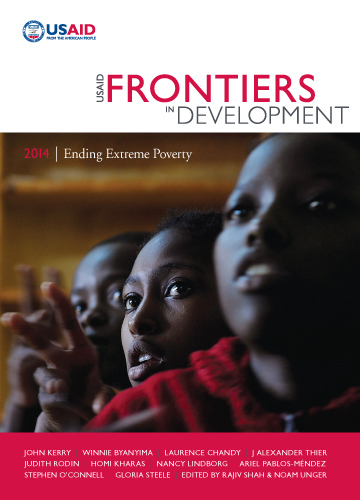Gil Dy-Liacco, Development Assistance Specialist in USAID/Philippines’ Office of Program Resources Management
How would you describe extreme poverty in the Philippines?
In 2012, extreme poverty in the Philippines was estimated at 19.2 percent of the population, or about 18.4 million people, based on the international poverty line of $1.25 per day. Most of the poor in the Philippines live in rural areas and work in the agriculture sector, mainly in farming and fishing. Urban poverty, however, has been increasing in recent years. Migrants without jobs or with low-paying jobs are unable to afford decent housing. As a result, Philippine cities have high proportions of informal settlers who are among the poorest of the poor.
Moreover, poverty is severe in parts of the country with high levels of conflict. The Philippines’ 10 poorest provinces are considered either conflict-affected or vulnerable to conflict.
The poor in the Philippines have families of six or more members, with greater numbers of younger and older dependents. In the majority of poor families, the head of household has only an elementary education or below. These families have few or no assets and minimal access to electricity, water sources and toilet facilities. They also have limited access to health and education services.
Among Philippine citizens, the poor are most vulnerable to financial and price shocks and natural disasters. Often their efforts to cope with these shocks and make up for lost livelihoods and income result in deeper levels of indebtedness.
What do you see as some of the biggest challenges to ending extreme poverty in the Philippines? What have been the most promising efforts so far in reducing extreme poverty?
In the Philippines, the key challenges to ending extreme poverty are the same as the country’s development challenges: weak governance and a lack of fiscal space, which reflect pervasive corruption, elite capture and state capture; inadequate education and health services; the persistence of armed conflict in the southern island of Mindanao; inadequate natural resources management; and increased frequency and intensity of natural disasters.
The country’s long history of policy distortions has led to patterns of growth that have failed to provide good jobs to the majority of Filipinos. Cities in the Philippines have not been able to keep pace with the explosive growth of urban populations, as evidenced in infrastructure and housing deficiencies, traffic congestion and environmental pollution. The private sector’s reluctance to invest and create more and better quality jobs reflects the country’s weak investment climate for firms of all sizes.
The Government of the Philippines currently provides targeted direct assistance to the extremely poor through social protection programs. Through a conditional cash transfer program, extremely poor families receive cash assistance when they fulfill requirements for free, government-provided child immunizations and enroll their children in school. In order to fund and implement its universal health program and improve access to basic education, the Government of the Philippines is aggressively accelerating revenue collection, improving public expenditure management and addressing constraints to effective local governance.
At the same time, the Government of the Philippines recognizes that ending extreme poverty requires strategies and programs aimed at sustaining inclusive, resilient growth. USAID, through the U.S.-Philippines Partnership for Growth, is helping the Government of the Philippines address binding constraints to inclusive growth by improving the quality of policies, regulations and their implementation; strengthening rule-of-law and anti-corruption measures; improving fiscal performance; and promoting human capacity development. USAID supports efforts to help the secondtier cities outside of Metro Manila to become effective engines of growth in their localities and surrounding areas.
USAID is fostering peace and stability in conflict-affected areas of Mindanao, where many of the country’s poor reside. USAID is enhancing environmental resilience through programs that mitigate the impact of natural disasters, so as to minimize the impact on the poor, who are disproportionately affected by these disasters. USAID is also implementing programs that improve access to quality education and health services. Finally, through humanitarian assistance work in disaster- and conflict-affected areas, USAID is supporting efforts to restore immediate access—especially for the poor—to basic services.
Data Sources and References:
Asian Development Bank – Poverty in the Philippines: Causes, Constraints and Opportunities, December 2009
National Economic and Development Authority – Mid-Term Update of the Philippine Development Plan, April 2014
Philippine Statistics Authority – National Statistical Coordination Board
Social Weather Stations
USAID/Philippines Country Development Cooperation Strategy, 2012-2016
World Bank: Country Partnership Strategy for the Republic of the Philippines for the Period FY 2015-2018, May 2014
The views expressed in this Q&A are those of the interviewee and do not necessarily represent the views of the United States Agency for International Development or the United States Government.
Frontiers in Development
Section 1: Understanding Extreme Poverty








Comment
Make a general inquiry or suggest an improvement.